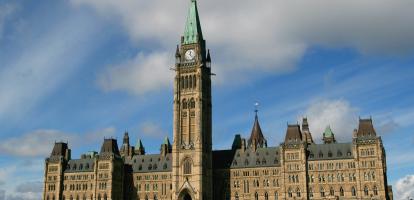The 1996 Royal Commission on Aboriginal Peoples made prominent reference to a 1613 treaty between the Dutch and Mohawk: “Three beads of wampum separating the two purple rows symbolize peace, friendship and respect. The two rows of purple are two vessels travelling down the same river together. One, a birch bark canoe, is for the Indian people, their laws, their customs, and their ways. The other, a ship, is for the white people and their laws, their customs and their ways. We shall each travel the river together, side by side, but in our own boat.”
The intent of much Canadian Indigenous policy since 1996 has been to "strengthen the canoe.” Overall, this has been a worthy exercise in the pursuit of reconciliation with those wanting to live communally. But not all want to live communally.
Increasingly those who identify as First Nation in the census live off-reserve. Between the 2001 and 2016 censuses, the proportion of First Nation people living on-reserve declined from 45 to 34 per cent. The majority of First Nation people now live in cities. The majority of Métis live in a large city (with a population of more than 100,000).
Although, on average, those who identify as First Nation and live off-reserve fare better than those on-reserve in terms of education, employment and income, there remain substantial gaps between this group and the non-Indigenous population in all three areas. Many living off-reserve are not faring well. There is a need for not just an on-reserve agenda, but also an off-reserve urban agenda.
The second conclusion from recent census data is that, for First Nation, Métis and non-Indigenous groups, employment earnings and rates are positively associated with education level. Closing the education gap between Indigenous and non-Indigenous people would dramatically reduce the earnings gap.
A third conclusion is the importance of provincial governments in closing that earnings gap. To be blunt, the provinces – not Ottawa or reserve communities – have the power and responsibility to organize good schools. To the extent that successful reconciliation means enabling the next generation of Indigenous Canadians to escape poverty, achieving better K-12 and postsecondary education levels among First Nation people is a high priority.
Given that two-thirds of the First Nation population live off-reserve and a third of children living on-reserve attend off-reserve (largely provincial) schools, provincial education ministries must participate centrally in pursuing this goal. If the provinces do pursue an aggressive off-reserve education strategy, there should be no illusion that the education gap between the Indigenous and non-Indigenous populations can be closed quickly. Such a strategy will require extensive policy discussion with Indigenous leaders, senior public school administrators, education faculties responsible for training teachers and teachers’ unions. It no doubt will require a significant increase in education budgets.
Some of this is already going on: Provincial school systems – more so in some provinces than in others – maintain close contact with reserve schools in order to co-ordinate programs for students who migrate between reserve and provincial schools, a frequent occurrence given the high mobility of Indigenous families.
High school completion is not enough. It is a low rung on the education ladder. For a community to realize “middle-class” incomes, most adults need to achieve some form of postsecondary training (trade certificate, college diploma or university degree). Predictably, in the 2016 census there is a high correlation at the provincial level between the Indigenous population share with high school completion in the ages 20-24 cohort and postsecondary training in the ages 25-34 cohort. Postsecondary certification rates for First Nation people 25-34 range from less than 30 per cent in Saskatchewan and Manitoba to more than 45 per cent in Ontario and Quebec. Nationally, the Métis rate is 53 per cent and the non-Indigenous rate is 68.
Again predictably, average First Nation earnings were, in 2015, only 71 per cent of the non-Indigenous average. Discrimination may well be a factor in explaining the gap. However, education levels matter. Provincially, average First Nation earnings relative to the non-Indigenous average ranged from almost 80 per cent in Quebec to not much more than 60 per cent in Manitoba and Saskatchewan.
The federal government has accorded reconciliation a high priority in terms of respect for treaty rights and increased funding for on-reserve services. To date, neither Ottawa nor the provinces nor the leaders of Indigenous organizations have given comparable financial and political priority to realizing goals – education goals in particular – among the majority of the Indigenous population that live off-reserve.
John Richards teaches in the Simon Fraser University public policy school and is a fellow-in-residence at the C.D. Howe Institute. He recently published a C.D. Howe commentary, Pursing Reconciliation: The Case for an Off-Reserve Urban Agenda.
Published in the Globe and Mail




